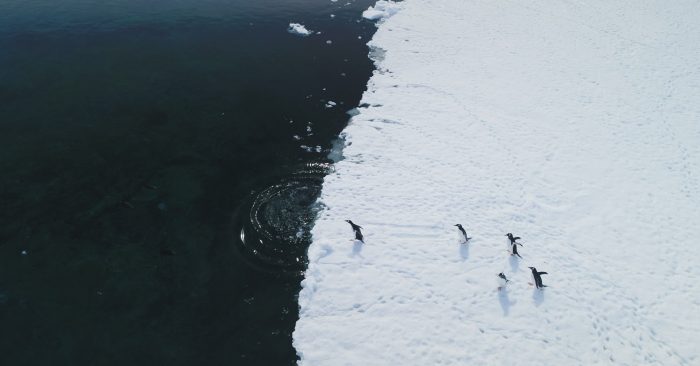New research into how East Antarctica’s ice shelves melt reveals future global sea-level rise predictions could be significantly underestimated.
A study published today found that while ice shelves in West Antarctica melt year-round, those in East Antarctica experience summer melting spikes, when sea ice retreats and warm ocean water flows beneath – a process known as basal melting.
This seasonal dynamic is largely overlooked by climate models – but could have major implications for global sea-level rise projections.
“Basal melting is a major driver of Antarctic Ice Sheet instability and ice loss,” says the study’s lead author, Dr Fabio Boeira Dias from the ARC Australian Centre for Excellence in Antarctic Science (ACEAS) and UNSW Sydney.
“Ice shelves act like dam walls, holding back the land ice behind them. When they melt from below and collapse, land ice flows into the ocean more readily, raising global sea levels and affecting coastal communities worldwide.”
He says global sea-level rise projections remain uncertain partly because climate models do not account for how the ocean interacts with ice shelves and the processes that drive basal melting.
“Our study highlights missing dynamics that could enhance Antarctic ice loss in future scenarios.”
Two modes of melting
Basal melting often occurs at small spatial and temporal scales, making it difficult to model or observe.
To investigate this process, the team ran a high-resolution ocean model – the Whole Antarctic Ocean Model (WAOM) – which allowed them to simulate how ocean water moved under the ice shelves and entered their cavities.
The results highlighted two distinct modes of melting across Antarctica.
“Our findings suggest that East Antarctica’s ice shelves, like Totten, experience strong shallow melting during summer, as warm surface waters intrude beneath them,” says Dr Boeira Dias.
“This process shuts down during winter, as areas of open water called coastal polynyas form near the coastline and cool the ocean surface,” he says.
“In contrast, ice shelves in West Antarctica like Getz or Thwaites melt more steadily throughout the year due to the persistent inflow of warm Circumpolar Deep Water.”

